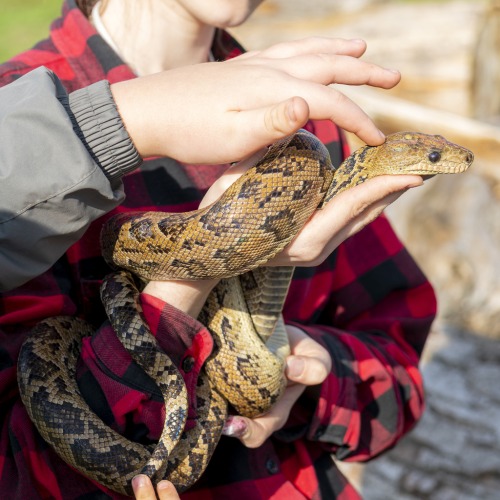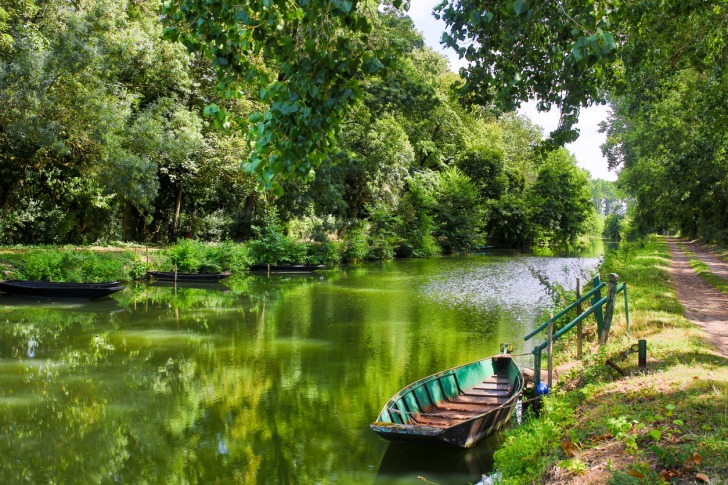France is known for the Eiffel Tower and the Louver, but there is much more to love about this European country, including beaches, mountains, rolling hills, and plains.
However, before you begin checking out the French countryside, you should learn about the snakes in France.

Contents
So… Are There Snakes in France?
Yes, there are one dozen species of snakes in France.
Most are non-venomous, but there are a few species you should be concerned about.
Snakes are feared in France.
They are so hated that it’s currently against the law to kill any snake, including poisonous vipers.
Killing a serpent can land you in jail or pay a hefty fine.
Snake Species in France
There are a dozen species of snakes in France, with four of them being venomous.
European Viper
The European viper, or European adder, is one of the most common snakes in France, and across Europe.
This snake is venomous, but its venom rarely causes serious problems.
There are about 200 bites each year in Britain, but only 1 fatality on record.
They are found in nearly every habitat in France, including woodlands and salt marshes.
However, they are rarely seen in the warmer regions of the country.
They are small to medium-sized snakes, growing to a little over 3 feet in length.
They have vertical pupils and a slightly flattened head.
Asp Viper
The asp viper is the most venomous snake in France.
About 4% of people bitten by this viper don’t survive if they don’t get medical treatment.
While it’s the most dangerous snake in France, it’s not nearly as dangerous as some species found in warmer countries.
This viper is common, and responsible for many bites.
In fact, in neighboring Italy, the asp viper accounts for 90% of snake bites.
These bites can cause severe pain.
It has anticoagulant and coagulant effects, which can damage the blood vessels.
If not treated, it can cause death.
Most have a brown body with a black pattern on their back.
Some are completely black.
They are smaller than European adders, at about 2 feet in length.
Western Montpellier Snake
The Western Montpellier Snake is not particularly dangerous to humans, but they are venomous.
The venom is less toxic than other adders, so reactions are usually mild.
These snakes are large, growing to more than 6 feet long.
They aren’t aggressive.
However, they can puff out their neck and hiss in an attempt to intimidate you.
This is a sign the snake should be left alone.
These snakes have rear fangs, which makes it very difficult for them to bite a person and inject venom.
There have only been a few cases of these snakes releasing venom, and no deaths have been reported.
They are typically a gray or olive color and may have a blue or black “saddle” on their back.
Meadow Viper
It’s very rare to see these snakes in France.
They are a little less than 2 feet long and have a brown body with a pattern running down their body.
Their venom has a low toxicity, but a bite may still require medical treatment.
They are endangered and only found in a few mountainous regions of France.
Grass Snake
The grass snake, or couleuvres, is the most common in France.
They do have venom that allows them to kill their prey, but they pose no threat to humans.
There are 8 species of grass snakes found in France.
One, the Couleuvre vert et jaune, will lower its head and hiss aggressively, which can lead people to think it’s venomous.
Another, the Couleuvre viperine, mimics an adder.
It’s found in the same areas as the Asp Adder and has a similar appearance.
This leads to frequent misidentifications.

Is it Safe to Go on a Trek in France?
Yes, hiking in France is very safe.
However, there are dangers you should know about.
Boars
Boars are on the rise and do pose a danger.
France has more than 1 million boars today.
They aren’t usually aggressive to humans, but they will attack if they feel threatened.
They have large tusks and will charge and stab or gore you with their horns.
Wolves
Wolves killed thousands of people in France.
However, in modern times, attacks are extremely rare.
Wolves typically avoid humans, especially since we began carrying guns.
Bears
Bears can attack humans, but they typically don’t attack unless they are being threatened or have cubs nearby.
You have little to worry about though.
There are only 20 bears in all of France.
Processionary Caterpillar
The Processionary caterpillar will turn into the Processionary moth.
However, when it’s in its caterpillar stage, it is dangerous.
These caterpillars have tiny hairs that have allergenic proteins.
If you come into contact with one, you may experience pain and swelling.
If you are allergic, you can have a life-threatening reaction.
Pets and small children are at a higher risk of a serious reaction due to their smaller size.
Weather
The weather can also be risky in France.
Summer temperatures can be hot, and the weather can change rapidly all year round.
In the winter, snowstorms and avalanches are a concern, particularly at high elevations.
Interesting Snake Facts in France
You can identify venomous snakes in France because they have elliptical or slit pupils.
Nonvenomous species have round eyes.
Venomous vipers are typically thicker-bodied than non-venomous snakes as well.
The French have an immense fear of snakes.
They were often killed in the past out of fear.
Today, it’s illegal to kill any snakes in France.
3 Safety Tips for Exploring Nature in France
1. Avoid Wild Animals
If you see a wild animal on your trek, keep your distance.
Most animals pose no real danger unless they feel threatened, so as long as you don’t get too close, you should be fine.
2. Let Someone Know Where You Are Going
Before heading out, you should tell someone where you are going and what time you plan to be back.
If you aren’t back by the set time, they can call the authorities.
This is particularly important if you are hiking alone.
3. Prepare for the Weather
You should be prepared for the weather before going out.
Check the weather and the forecast.
Bring extra water in the summer, and extra clothes and shelter in the winter months.
Summary
Snakes in France can be venomous, but fatalities from snake bites are very rare.
Most venomous species are not highly venomous, which should ease your mind about exploring France.
Remember that all snake species are protected, so never attempt to kill a French serpent.
France Safety Overview
READ THE FULL REPORT: France Safety Review
Safety Index:
- OVERALL RISK: MEDIUM
- TRANSPORT & TAXIS RISK: MEDIUM
- PICKPOCKETS RISK: HIGH
- NATURAL DISASTERS RISK: LOW
- MUGGING RISK: MEDIUM
- TERRORISM RISK: HIGH
- SCAMS RISK: HIGH
- WOMEN TRAVELERS RISK: LOW
Frequently Asked Questions
What is the largest snake in France?
The largest snake in France is the Aesculapian snake (Couleuvre d’Esculape).
Most are about 4 to 5 feet long, but they can grow to more than 6 feet.
What is the smallest snake in France?
The smallest snake in France is the viperine.
It gets its name because it’s often mistaken for an asp viper.
These snakes are typically about 2 feet long.
What is the most venomous snake in France?
The most venomous snake in France is the Asp viper.
About 4% of bites result in death without medical treatment.











